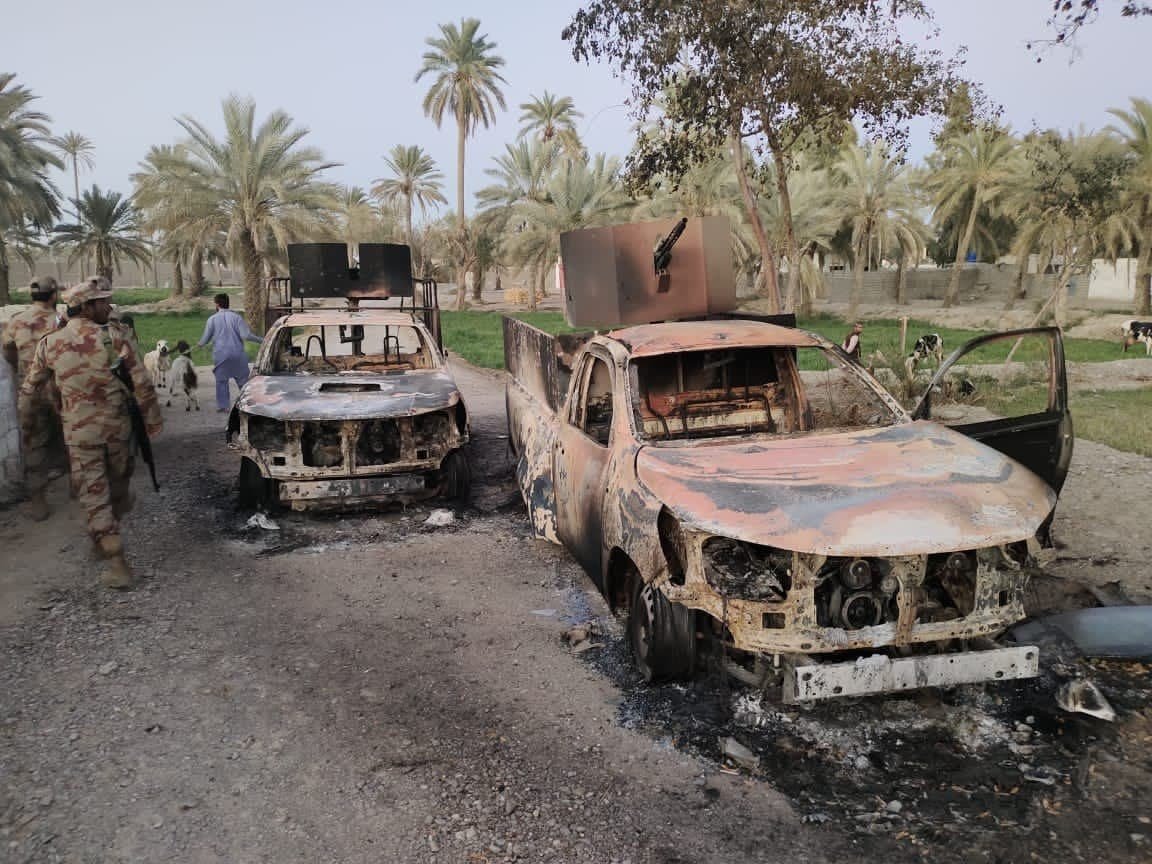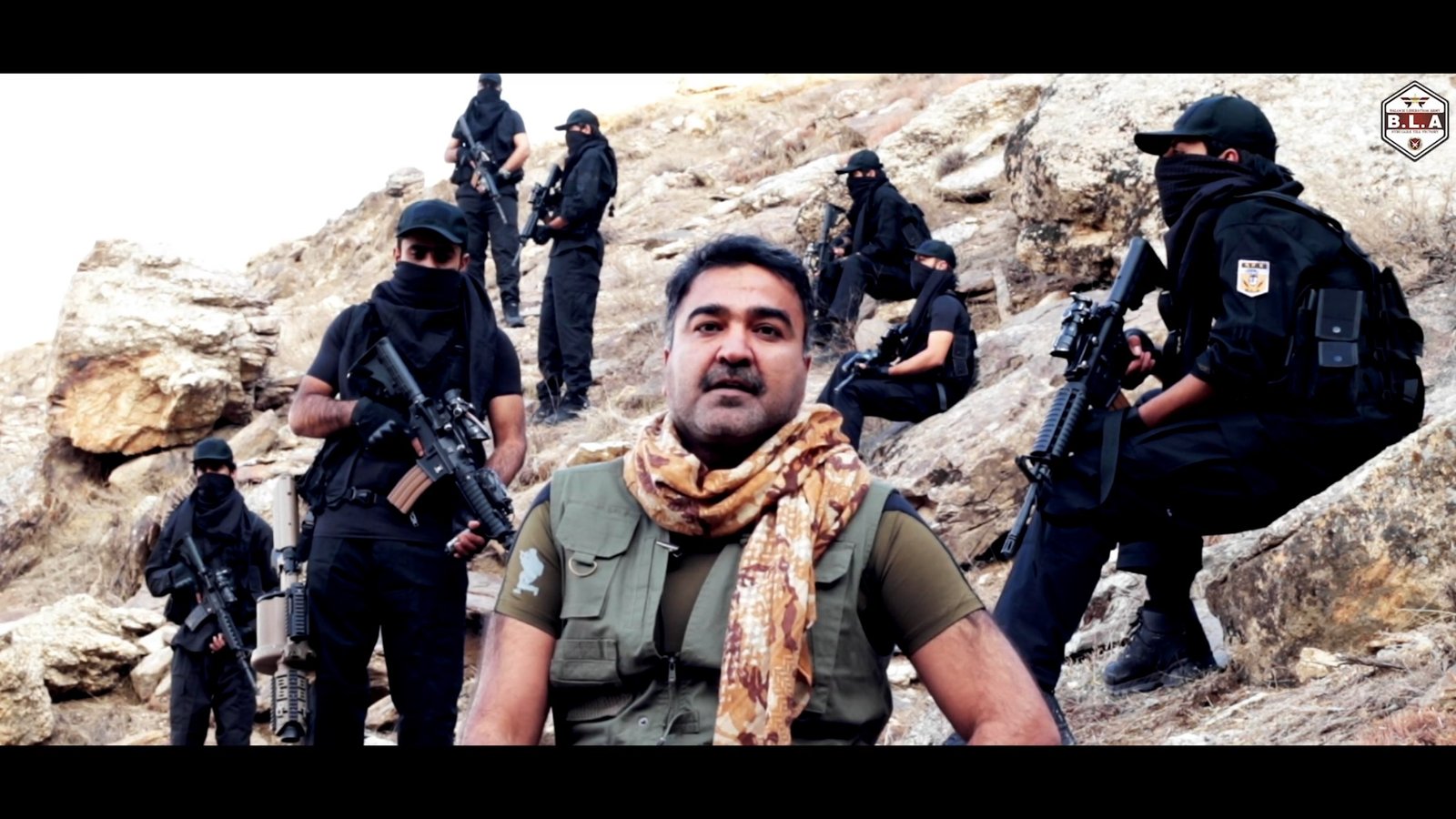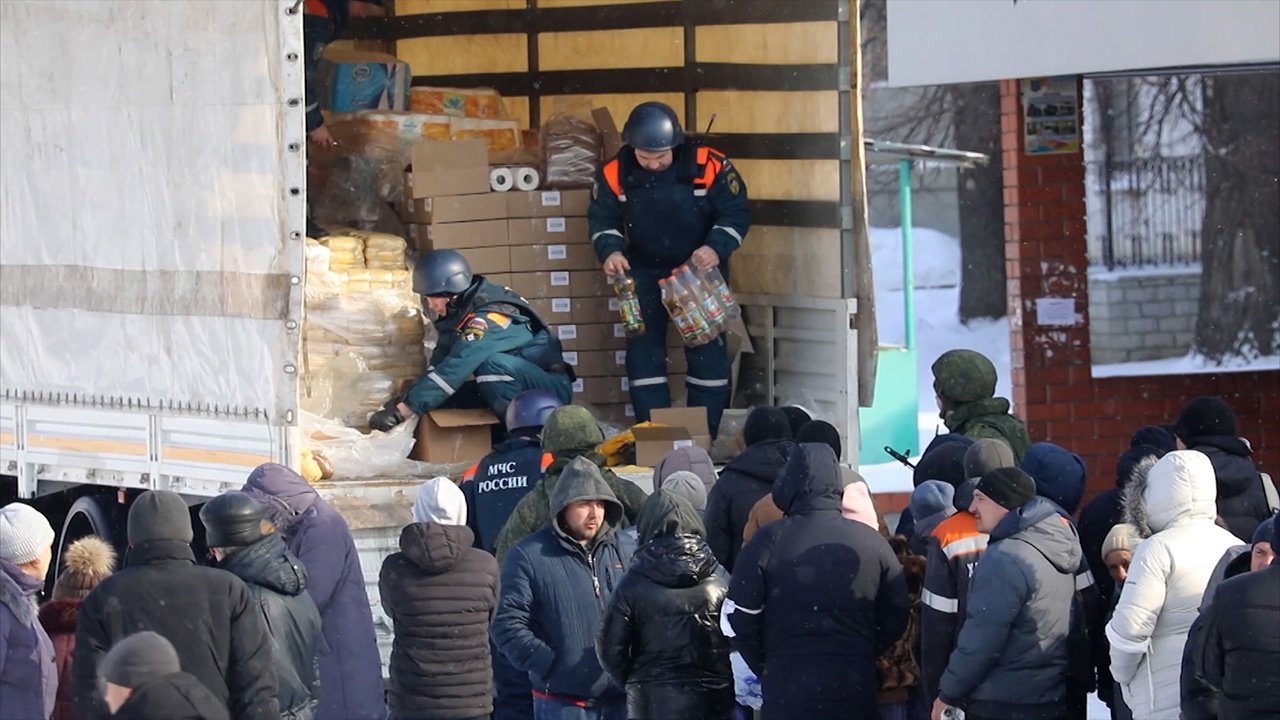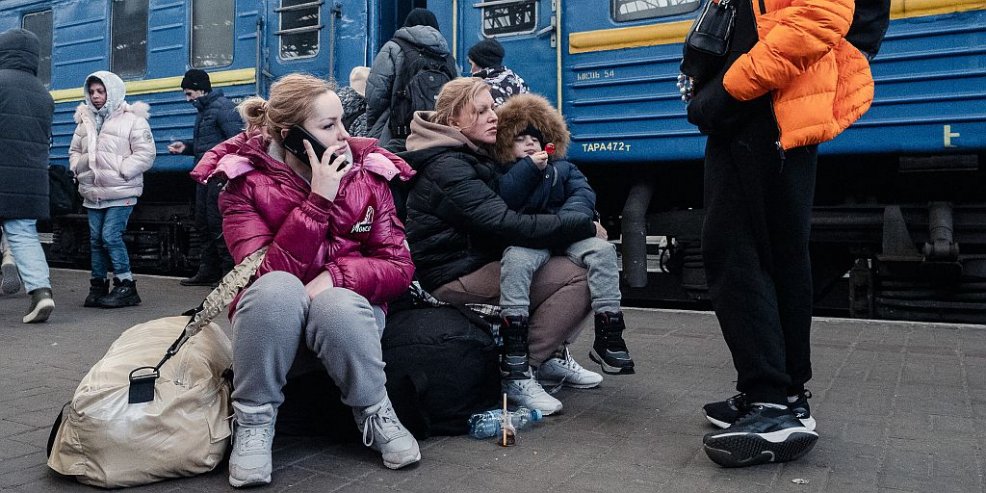Is Pakistan’s Occupation of Balochistan viable anymore? CPEC has failed to generate expected returns for Pakistan, Instead made Pakistan debt ridden and bankrupt.
Over the last few years, the world has seen an increasing number of attacks by the natives of Baloch against the occupying Pakistanis and as days pass, these attacks are increasing and are becoming more brazen. The attack on the fortress of Gwadar is but an example. The recent ones are another. Though Pakistan’s penchant for lying over its casualties is well known all over the world, things are getting hard even for the Pakistanis to hide their numbers. In the recent attack by the Baloch locals, Pakistan was forced to destroy two of its military bases causing massive losses to the country whose economy is already in a tailspin. All of this begs one to question does Pakistan really have sufficient resources to hold its vice grip on Balochistan.
Recent Siege
16 highly trained Baloch Freedom Fighters of Majeed Brigade carried out Operation Ganjal. 9 Baloch Freedom Fighters were involved in the Noshki attack, whereas 7 Baloch Freedom Fighters took part in Panjgur attack. The Baloch Freedom Fighters took control of two different camps of Pakistani forces and eliminated more than 195 personnel of enemy and injured several more. Three officers of the Pakistan Army were also killed.

It is not known if any Pakistani soldiers trapped in the camps under siege were killed in the firing by Pakistani gunships to flush out the Baloch Freedom Fighters.
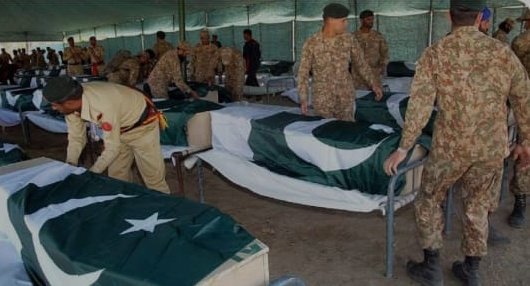
More than 90 enemy (Pakistan Army) personnel, including approximately 55 personnel of Frontier Corps, 18 SSG Commandos and 7 Lite Commandos were killed in Noshki, whereas at least 105 enemy personnel were neutralized in Panjgur. This includes 85 personnel of Frontier Corps and 20 SSG Commandos. During the battle a military drone was shot, whereas a helicopter was also targeted. As per some unconfirmed reports 4 helicopters of Pakistan Army were downed, while some other unconfirmed reports claim 2 helicopters of Pakistan Army were downed. However Balochistan Freedom Fighters Group Baloch Liberation Army in their press statement claimed one Pakistan Army Helicopter was targeted.
However, it could not be ascertained if this helicopter crashed or not. Two armored vehicles of Pakistani military were destroyed, whereas both military camps were partially destroyed.

Operation Ganjal
Operatioon Ganjal is named after martyr Ganjal alias Comrade Mazar of Lyari Karachi. Ganjal, commander of BLA in Kalat region, was also a Baloch Freedom Fighter . He was not only to take part in Noshki and Panjgur operations but was also nominated as its operational commander. However, on 24th September he along with five freedom fighters embraced martyrdom while defending organisation’s camp in Kalat, Balochistan.
Operation Ganjal started at 8pm on 2nd February when two different units of Majeed Brigade targeted Noshki and Panjgur headquarters of Pakistani frontier core simultaneously. The attack started when Baloch Freedom Fighter Meerain Jamaldani alias Zagrain of Noshki detonated his vehicle borne improvised explosive device at the gates of Noshki camp. This blast killed all troops stationed at the entrance of the camp. Later under the leadership of Unit Commander Badil Baloch alias Riyasat of Hoshaab, the Baloch Freedom Fighters entered the enemy (Pakistan Army) camp. These Baloch Freedom Fighters included Aziz Zehri alias Barag of Khuzdar, Aneel Baloch alias Balaach of Dasht Turbat, Muraad Aajo alias Baba of Panjgur, Yasir Noor alias Saif of Alandor Bulaida, Ibraheem Baloch alias Kabeer of Gichk, Deedag Bahar alias Rauf of Shapuk Turbat and Bilal Baloch alias Wahid of Tejaban Kech.
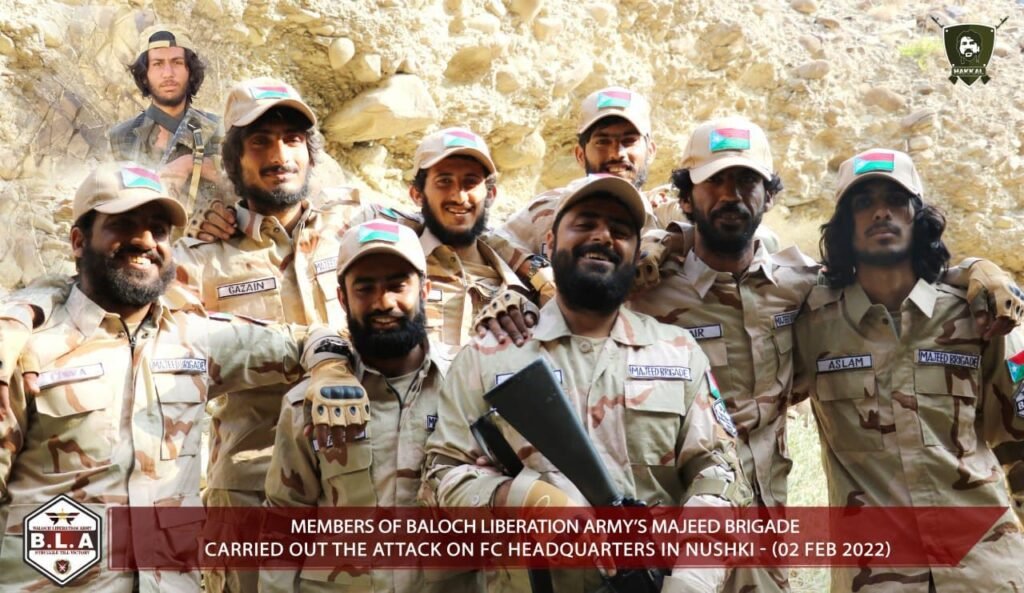
The Baloch Freedom Fighters in Noshki killed 90 enemy (Pakistan Army) personnel, including two officers and destroyed a major part of the camp. Dozens of enemy personnel were also injured.
On other hand at the same time on 2nd February in Panjgur Freedom Fighters Jamal Baloch alias Chacha of Turbat detonated his VBIED at the main entrance of FC camp in Pangjur. The blast destroyed the front part of the camp and killed all personnel present at the entrance. Then under leadership of Unit Commander Hamid Raheem alias Zubair of Chitkan Panjgur, Sami Sameer alias Shoaib of Panjgur, Iliyas Baloch alias Qadir of Gramkan Panjgur, Asad Wahag alias Sabzo of Keelkor, Nasir Imam alias Hamal of Parom and Zameer Baloch alias Faraz of Dandaar Hoshaap entered most of the enemy personnel. The remaining personnel, instead of facing the Baloch Freedom Fighters (s), fled the camp.
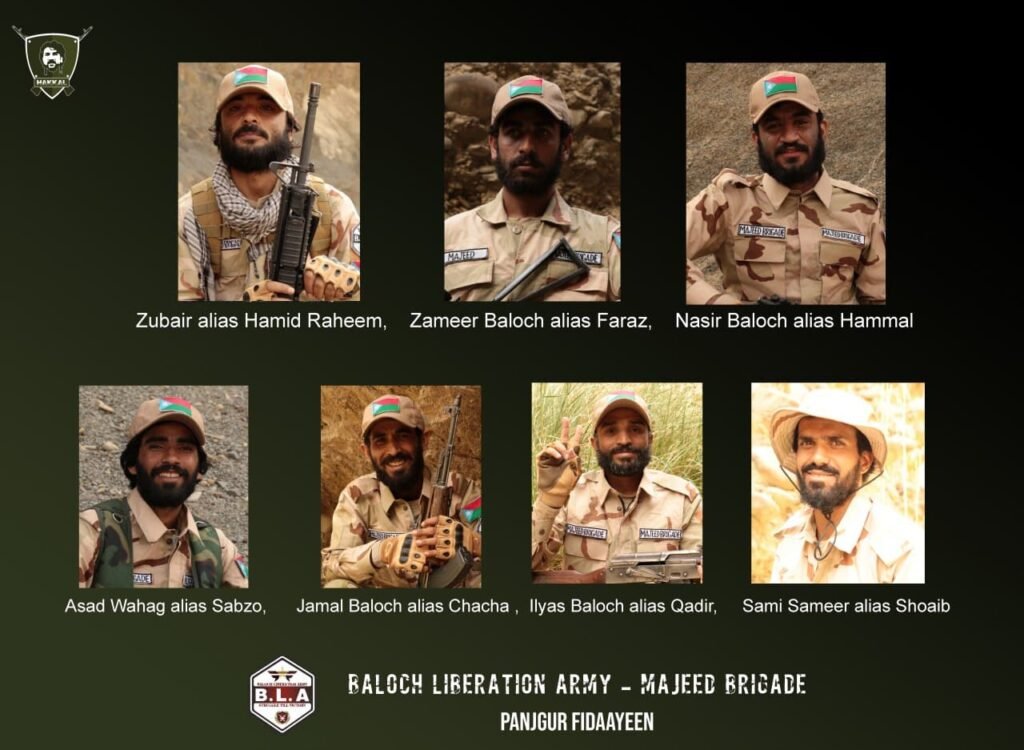
The objective of Panjgur unit was to take control of the enemy’s camp for maximum time possible. After enemy’s escape Baloch Freedom Fighters took control of the whole camp. Pakistani forces used its ground troops, including Special Services Group Commandos and even gunship helicopters to take back the control of the camp. The enemy forces with the SSG Commandos, armoured vehicles and gunship helicopters made five large attempts to gain control. However, the Baloch Freedom Fighters repulsed each and every attack and inflicted heavy losses upon the enemy (Pakistan Army). For 72 hours the Baloch Freedom Fighters managed to successfully defend their positions while fighting against Pakistani elite military units. After failure of all ground attempts, Pakistani gunship helicopters heavily bombarded positions of Baloch Freedom Fighters and after a long heroic resistance all Baloch Freedom Fighters embraced martyrdom.
In Operation Ganjal, BLA Majeed Brigade had full support of all allied organisations of BRAS. This major, complex and strong attack not only shows the extent to which Baloch nation can go for its independence but also highlights the importance and benefits of united and consolidated power of resistance.
Commander-in-Chief of Baloch Liberation Army’s message for Baloch nation:
Baloch Freedom Fighters Group Baloch Liberation Army initiated Operation Ganjal at 8pm on 2-February 2022. The operation, carried out by Majeed Brigade, achieved all its objectives after 72 hours of continuous combat.
As per the press statement issued by spokesperson Jeeyand Baloch of Baloch Liberation Army today i.e. on February 6, 2022 early morning, “the main objective of Operation Ganjal was not only to show occupying state Pakistan but also entire world the military capabilities of Baloch resistance movement. This operation confirms the fact that Baloch youth can go to any extent to achieve Baloch national liberation. Baloch freedom movement is a homegrown movement, and its power sources lie in Baloch public. All Baloch Freedom Fighters involved in Operation were educated, Baloch youth who were born in Balochistan and, following the philosophy of Genral Aslam Baloch, died defending the motherland. This should be now clear that this freedom movement cannot be weakened by any changes in neighboring countries or by being labeled as a proxy movement.”
As per the press statement, “Baloch Liberation Army values human lives and we do not find happiness in ending any life. If Pakistan, instead of bloodshed and carnage, opts for peace then we in the presence of an international guarantor invite Pakistan to the negotiation table. We are ready for negotiations on agendas of secure withdrawal of Pakistani forces from Balochistan and complete independence of our motherland.”
“However, If Pakistani military is hellbent on violence then we warn it with clear words that our next attacks will be much harsher and we will go to any extent for defending our homeland. We have the full capability of taking this war to any part of Pakistan.”
Press statement issued by BLA further reads, “We also want to tell the people of Punjab that you should not let the military Generals to use your children as cannon fodders in their wars. Pressurise your military to withdraw. Your military, in order to strengthen its occupation of Balochistan, is involved in Bangladesh style crimes including Baloch genocide, rape and plundering of Baloch resources.”
Press statement also included a warning for China. It reads, “We also once again warn China to refrain from aiding Pakistan in looting Baloch resources and strengthening occupation of our motherland or else their interests will once again be at our target.”
BLA totally rejects ISPR statements and considers it as a bundle of lies. Pakistani military is hiding its dead bodies due to internal pressure and embarrassment it has suffered on international platform.
The 16 Baloch Freedom Fighters of Majeed Brigade engaged with a much powerful military and wrote history by fighting the longest battle of modern Baloch history. Baloch nation, history and Baloch Liberation Army will never forget the ultimate sacrifices of these valiant Baloch Freedom Fighters (s). A new dawn will emerge from the sacrifices of martyrs and the Baloch national emancipation will be a reality.
These are not the only attacks by Balochistan Freedom Fighters on Pakistan Army. We have from time to time covered news about many such attacks in the past.
The most memorable attack was the one that was carried out by Baloch Freedom Fighters on 11-May, 2019 on 5 Star Hotel “Pearl Intercontinental” located in port city Gwadar of Balochistan.
Balochistan Commemorates 2019 Gwadar Attack
Balochistan Freedom Fighters Attack Pakistan Army Convoy : 9 Pakistani Forces killed
Pakistan Army Gunship Helicopters Fled Defeated After Balochistan Freedom Fighters Retaliated
Balochistan Freedom Fighters Kill 20 Pakistan Soldiers Including An Officer
If one goes through some of the previous articles we posted above, one can easily note that number of attacks carried out by Baloch Freedom Fighters at will and at places of their choosing against Occupying Pakistan Army and the losses suffered by occupying Pakistan Army in terms of men and material.
If one wants to know the atrocities that Pakistan Army is committing in Balochistan one should not miss reading the articles:-
Pakistan Army Committing Genocide in Balochistan: Massive Operation Launched
Pakistani Army Continues Barbarism in Balochistan: Killing Baloch Point Blank
It should be mentioned here that Balochistan has natural resources worth $1 Trillion and Pakistan is selling exploiting Balochistan and selling the natural resources to China while native Baloch are living in perpetual poverty. Balochistan Freedom Fighters have now stood up against the atrocities committed by Occupying Pakistan Army.
Punjabi Pakistan is giving away resources of occupied Balochistan and Sindhudesh, the resources that never belonged to Punjabi Pakistan at the first place.
China and Pakistan have constructed Gwadar Port at one end of CPEC.
Gwadar
Gwadar is situated on the southwestern Arabian Sea coast of Pakistan in Gwadar District of Balochistan province. Like Ormara further east, Gwadar is situated on a natural hammerhead-shaped tombolo peninsula forming two almost perfect, but naturally curved, semicircular bays on either side. The city is situated on a narrow and sandy 12 kilometers long isthmus which connects the Pakistani coast to rocky outcroppings in the Arabian sea known as the Gwadar Promontory, or Koh-e-Batil, which reach an altitude of 480 feet and extends seven miles east to west with a breadth of one mile. The 800 foot wide isthmus upon which Gwadar is located separates the two almost perfect semicircular bays from one another. The western bay is known as the Paddi Zirr, and is generally shallow with an average depth of 12 feet, and a maximum depth of 30 feet. To the east of the isthmus is the deepwater Demi Zirr harbor, where the Gwadar Port was built.
The area north of the city and Gwadar Promentory is flate and generally barren. The white clay Koh-e-Mehdi (also known as Jabal-e-Mehdi) is a notable exception, and rises sharply from the plans to the northeast of Gwadar. The Koh-e-Mehdi features a two discernible peaks, with a height of 1,360 and 1,375 feet, and is approximately 4 miles wide and features sharp cliffs that drop precipitously into the Arabian Sea. Following an earthquake in September 2013 a small island called Zalzala Jazeera (“Earthquake Island”) formed approximately 2 kilometres (1.2 mi) off the coast.
How was Gwadar strategically important for China instead of Pakistan?
Planned investments in Gwadar Port as part of CPEC was to improve connectivity to the restive Xinjiang, Uyghur Autonomous Region, thereby increasing the region’s potential to attract public and private investment. The Gwadar Port project was thought to also complement China’s Western Development plan, which includes not only Xinjiang, but also the neighboring regions of Tibet and Qinghai.
In addition to its significance to reduce Chinese dependence on the Sea of Malacca and South China Sea routes, the port of Gwadar was thought to provide China an alternative and shorter route for energy imports from the Middle East, thereby reducing shipping costs and transit times. The currently available sea-route to China is roughly 12,000 kilometres (7,500 mi), while the distance from Gwadar Port to Xinjiang province is approximately 3,000 kilometres (1,900 mi), and another 3,500 kilometres (2,200 mi) from Xinjiang to China’s eastern coast. As a result of the CPEC, Chinese imports and exports to the Middle East, Africa, and Europe would require much shorter shipment times and distances.
Is Pakistan’s Occupation of Balochistan viable anymore?
However Chinese CPEC road that was supposed to make Pakistan Rich, in turn made it Debt ridden and bankrupt. Pakistan Prime Minister Imran Khan’s every foreign visit if with a begging bowl asking for alms.
However after making Pakistan Bankrupt and struggling to pay loan installments, What is the economic turnover of Gwadar? Wasn’t it supposed to be as big as Karachi? In March 2019, the Pakistani Senate was informed that during last three years, total gross revenue of Rs 358.151 million (Pakistani Rupees where $1 USD =174.55 PKR) had been generated from Gwadar Port, out of which the share going to Gwadar Port Authority was Rs 32.324 million.
If it is possible for Balochistan freedom fighters to cross all these omnipresent physical and procedural security barriers and carry out a remarkable attack on Pakistani and Chinese invaders, just imagine how useless Pakistan Security forces are.
Balochistan is mostly off limits to outsiders and there’s no visible foreign presence beyond the Chinese. Journalists and visitors are closely monitored by Pakistan’s intelligence agencies.
The journey from the exit out of the Gwadar Airport to the narrow passage through the old town – barely half a kilometre stretch – to the security checkpoints before the Port Area and on the way to the Kohe Batil is not amusing at all.
The first thing that strikes a maiden visitor to the area during this 10-kilometre trip is the narrow entry-exit gate; all the vehicles on the way out have to meander through a dirt patch if the way is blocked by incoming traffic – a sad reflection indeed on the competence of the authorities.
Equally striking is the presence of about two dozen armed soldiers and their vehicles near and around the gate of the airport. The sight of this imposing presence of armed forces itself is a turn-off, in fact intimidating, particularly for foreign visitors who are not used to such scenes.
Next, the security checkpoint before the Port Area itself is often quite testing not only for Pakistani visitors but also even for locals because of discomforting questions by the young soldiers manning the posts. They clearly lack the knowledge of local sensitivities. Nor are they equipped with the ability to distinguish between potential militants and visitors – most of whom travel in the official vehicle of the only hotel that is perched on the Kohe Batil.
And these factors often breed frustration among locals as well as give way to all kind of suspicion and speculation. Ashraf Hussain, for instance, is a local politician and big name in the real estate because of ancestral lands his family has owned. He is mostly reluctant in coming to the PC Hotel on Kohe Batil because of questions ( in his words “insults”) that he some times has to face at the hands of soldiers at piquets.
Punjabi dominated Pakistan does not trust the local Baloch population. As a result most locals feel being treated as terror suspects. The share of jobs for local Baloch people in provincial institutions such as GDA or the Port Authority is minimal. Most of the contracts are gradually being doled out to Punjabi outsiders from Karachi and Lahore, which means elbowing out local Baloch population and condemn them to live in poverty and destitue while taking over their lands at cheap prices without any suitable compensation.
Due to the continuous burning of baloch villages, enforced disappearance of Baloch locals for organ harvesting or killed by death squads and SSD, locals do not venture in the area near the Gwadar. Native Baloch if trying to cross the area can be spotted from a distance.
“It doesn’t feel like a normal investment location or an enabling business environment if that level of protection needs to be provided,” said Andrew Small, who has written a book on Pakistan-China relations and is one of a handful of westerns to have traveled to Gwadar.
It is interesting to note, while Pakistan is facing one of it’s worst military disasters after 1971 coinciding with it’s much touted but the flopped Kashmir Solidarity Function, Imran Khan has left the country to watch Olympics in China. What sort of message this sends to the morale of the army is something worth watching.
Follow us at:-
Twitter Handle: @newscomworld
Twitter Handle for Hindi : @NewsWorldHindi
Telegram Handle : @NewsComWorldCom
Koo Handle : @NewsComWorld
GETTR Handle: @NewsComWorld
Parler Handle: @NewsComWorld
Tooter Handle: @NewsComWorld
YouTube Channel https://www.youtube.com/channel/UCnKJQ3gFsRVWpvdjnntQoAA
Facebook Page https://www.facebook.com/NewsComWorld
3,913 total views


